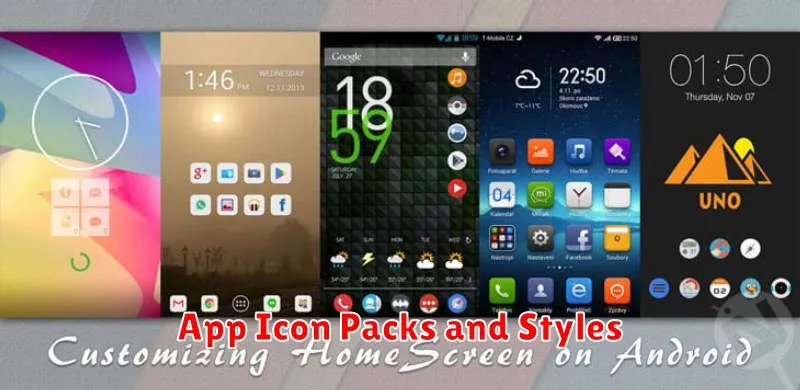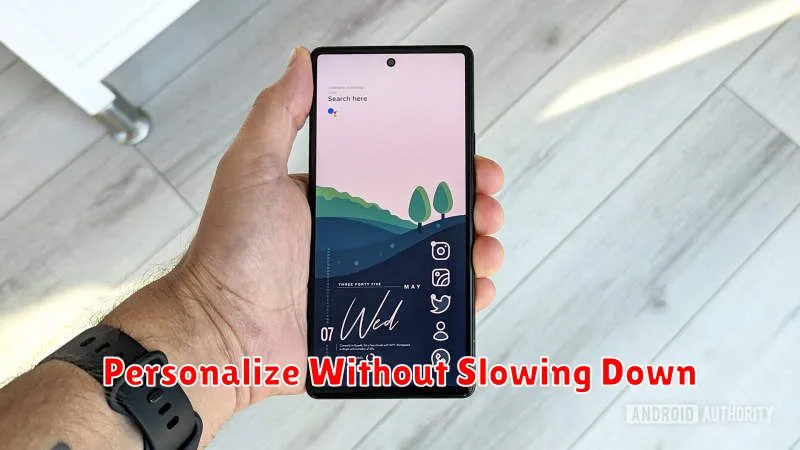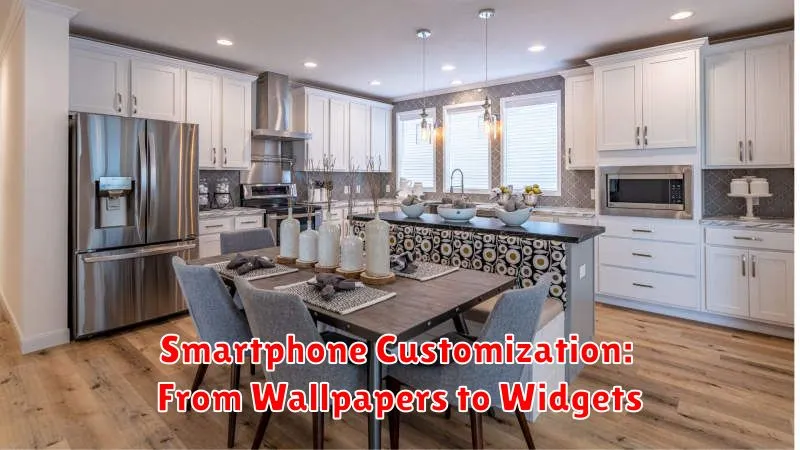Smartphone customization offers a powerful way to personalize your mobile experience, transforming your device from a generic tool into a unique reflection of your individual style and needs. From aesthetic tweaks like wallpapers and themes to functional enhancements using widgets and launchers, the possibilities for smartphone customization are vast. This article will delve into the various methods you can employ to tailor your smartphone’s interface, ensuring it caters perfectly to your preferences and enhances your daily interaction.
Whether you’re seeking a minimalist setup, a vibrant and expressive design, or a highly efficient and organized interface, smartphone customization provides the tools to achieve your vision. Explore the world of wallpapers, discover the utility of widgets, and learn how launchers can revolutionize your smartphone experience. This comprehensive guide will cover everything from simple changes to more advanced techniques, enabling you to master the art of smartphone customization and unlock the full potential of your device.
Home Screen Layouts
The layout of your home screen is the first thing you see when you unlock your phone. Customization options allow you to arrange apps and widgets in a way that best suits your needs. You can typically choose from a standard grid layout, a simplified layout with larger icons, or even a more free-form arrangement.
Consider factors like the number of apps you use frequently, how you prefer to organize them (by category, color, or alphabetically), and how much space you want to dedicate to widgets providing at-a-glance information.
Wallpapers and Themes
Wallpapers and themes are fundamental elements of smartphone personalization. They allow users to visually transform their device’s interface. A wallpaper is an image displayed as the background on the home screen and/or lock screen.
Themes expand upon this customization, often including coordinated sets of wallpapers, icons, and other visual elements. They offer a cohesive aesthetic experience. While wallpapers primarily affect the background, themes can alter the appearance of app icons, system menus, and even the notification panel.
Modern smartphones offer a wide array of pre-installed wallpapers and themes. Users can also download additional options from app stores or create their own using personal photos.
Using Widgets Effectively
Widgets offer at-a-glance information and convenient access to app functionalities directly from your home screen. Effective widget use revolves around prioritizing relevant information and optimizing placement for quick access. Avoid cluttering your home screen by selecting only the most essential widgets.
Consider the size and function of each widget. Larger widgets display more information but consume more space. Smaller widgets offer a compact view, ideal for quick checks. Experiment with different sizes and configurations to find a balance that suits your needs.
Organization is key. Group similar widgets together for a streamlined look and improved usability. For example, keep all your productivity widgets in one area and your entertainment widgets in another. This allows you to quickly locate and interact with the information you need.
App Icon Packs and Styles

Icon packs offer a simple yet effective way to dramatically alter your phone’s aesthetic. They provide a cohesive set of redesigned app icons, often following a particular theme, such as minimalism, material design, or even retro styles.
Most launchers support icon packs, allowing you to apply them universally across your apps. Some launchers even offer built-in icon customization options like shape adjustments and color tweaking. Choosing an icon pack that complements your wallpaper can create a truly unified and personalized look.
Lock Screen Options
The lock screen is the first thing you see when you pick up your phone. Customizing it allows you to personalize this initial interaction and make it more informative and efficient. Modern smartphones offer a wide variety of lock screen options, allowing you to tailor it to your specific needs.
Key features often include changing the wallpaper, adding widgets for quick access to information, and configuring notifications. Security options like PINs, patterns, and biometric authentication are also managed through the lock screen settings.
Some devices allow for multiple lock screen layouts, enabling different configurations for work and personal use. This allows you to prioritize information based on the context of your current environment.
Custom ROMs and Launchers
For the ultimate in smartphone customization, consider custom ROMs and launchers. Custom ROMs replace your phone’s operating system, offering enhanced features and potentially improved performance. This requires technical knowledge and carries risks, including voiding your warranty. Proceed with caution and thorough research.
Launchers are a less drastic alternative. They change the look and feel of your interface, allowing you to customize icons, widgets, and animations. Many launchers are available on the app store, providing various customization options to suit your preferences.
Accessibility Customization
Accessibility features on modern smartphones offer extensive customization options to cater to diverse needs. These settings allow users to tailor their device experience for optimal comfort and usability.
Key areas of customization include display adjustments such as font size, color inversion, and magnification. Audio settings can be modified for mono audio, hearing aids, and closed captions. Interaction controls provide alternatives to traditional touch input, like voice control and switch access.
These customizations go beyond simple preferences and play a crucial role in making technology accessible to users with disabilities.
Dark Mode and Color Themes
Dark mode has become increasingly popular in recent years, offering several benefits. It reduces eye strain, especially in low-light conditions, and can conserve battery life on devices with OLED or AMOLED screens. Many smartphones allow users to schedule dark mode to activate automatically at certain times.
Beyond dark mode, many devices offer color themes or accent colors. These allow for further personalization, changing the hues used in the user interface, from notification backgrounds to app icons. Some manufacturers even provide tools to create custom color palettes based on a chosen wallpaper.
Live Wallpapers and Effects
Live wallpapers introduce an element of dynamic motion to your smartphone’s home screen and/or lock screen. These animated backgrounds can range from subtle shimmering effects to more complex simulations like rippling water or floating particles. Live wallpapers consume more battery power than static images, so consider this trade-off for visual appeal.
Beyond live wallpapers, some devices offer additional visual effects. These might include transitions between screens, charging animations, or touch feedback visualizations. While some users find these effects engaging, others prefer a cleaner, more minimalist approach. It’s generally possible to customize or disable these effects through your device’s settings.
Personalize Without Slowing Down

While customization can make your smartphone feel truly yours, it’s important to avoid negatively impacting performance. Overloading your device with live wallpapers, complex widgets, or too many apps running in the background can lead to lag and decreased battery life.
Choose customizations wisely. Opt for static wallpapers over live ones. Limit the number of active widgets on your home screen, and regularly close apps you’re not using. By making informed choices, you can enjoy a personalized experience without sacrificing speed or efficiency.

